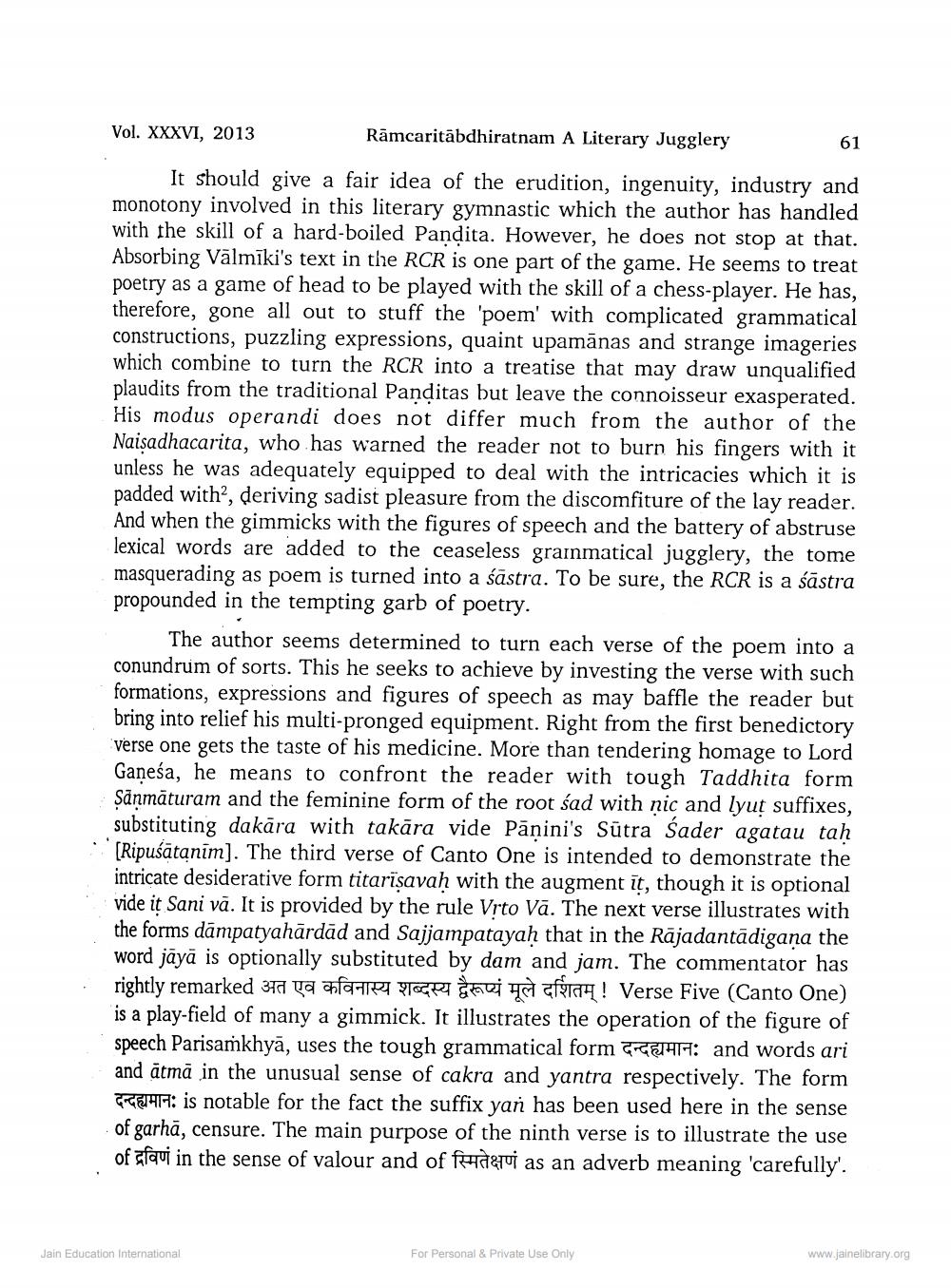________________
Vol. XXXVI, 2013
Rāmcaritabdhiratnam A Literary Jugglery
61
It should give a fair idea of the erudition, ingenuity, industry and monotony involved in this literary gymnastic which the author has handled with the skill of a hard-boiled Pandita. However, he does not stop at that. Absorbing Vālmīki's text in the RCR is one part of the game. He seems to treat poetry as a game of head to be played with the skill of a chess-player. He has, therefore, gone all out to stuff the 'poem' with complicated grammatical constructions, puzzling expressions, quaint upamānas and strange imageries which combine to turn the RCR into a treatise that may draw unqualified plaudits from the traditional Panditas but leave the connoisseur exasperated. His modus operandi does not differ much from the author of the Naisadhacarita, who has warned the reader not to burn his fingers with it unless he was adequately equipped to deal with the intricacies which it is padded with?, deriving sadist pleasure from the discomfiture of the lay reader. And when the gimmicks with the figures of speech and the battery of abstruse lexical words are added to the ceaseless grainmatical jugglery, the tome masquerading as poem is turned into a śāstra. To be sure, the RCR is a śāstra propounded in the tempting garb of poetry.
The author seems determined to turn each verse of the poem into a conundrum of sorts. This he seeks to achieve by investing the verse with such formations, expressions and figures of speech as may baffle the reader but bring into relief his multi-pronged equipment. Right from the first benedictory verse one gets the taste of his medicine. More than tendering homage to Lord Ganesa, he means to confront the reader with tough Taddhita form Şanmāturam and the feminine form of the root sad with nic and lyut suffixes, substituting dakāra with takāra vide Pāṇini's Sūtra Śader agatau tah [Ripuśātanim]. The third verse of Canto One is intended to demonstrate the intricate desiderative form titarisavah with the augment it, though it is optional vide it Sani vā. It is provided by the rule Vrto Vā. The next verse illustrates with the forms dāmpatyahārdād and Sajjampatayaḥ that in the Rājadantādigana the word jāyā is optionally substituted by dam and jam. The commentator has rightly remarked 3ta ya afahren grote aaj MT CRTA4! Verse Five (Canto One) is a play-field of many a gimmick. It illustrates the operation of the figure of speech Parisamkhyā, uses the tough grammatical form GGh: and words ari and ātmā in the unusual sense of cakra and yantra respectively. The form GG: is notable for the fact the suffix yan has been used here in the sense of garhā, censure. The main purpose of the ninth verse is to illustrate the use of afavi in the sense of valour and of fatui as an adverb meaning 'carefully'.
For Personal & Private Use Only
www.jainelibrary.org
Jain Education International




